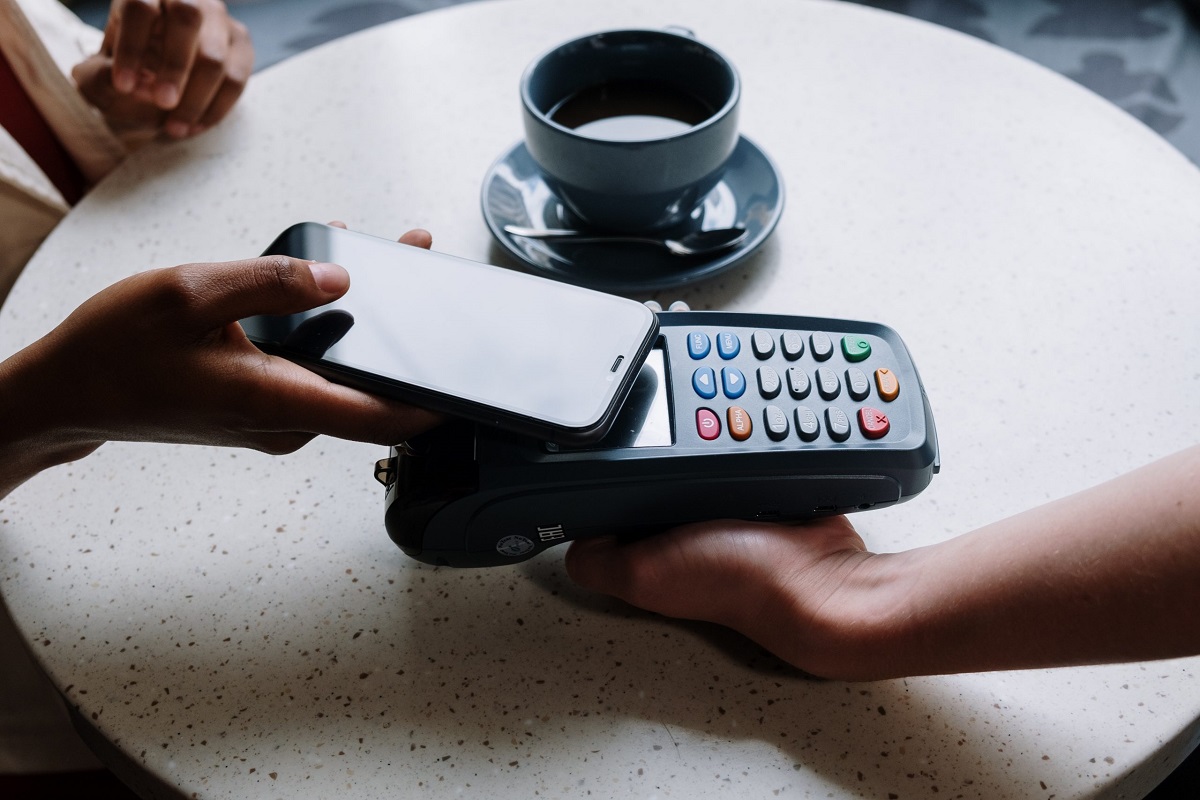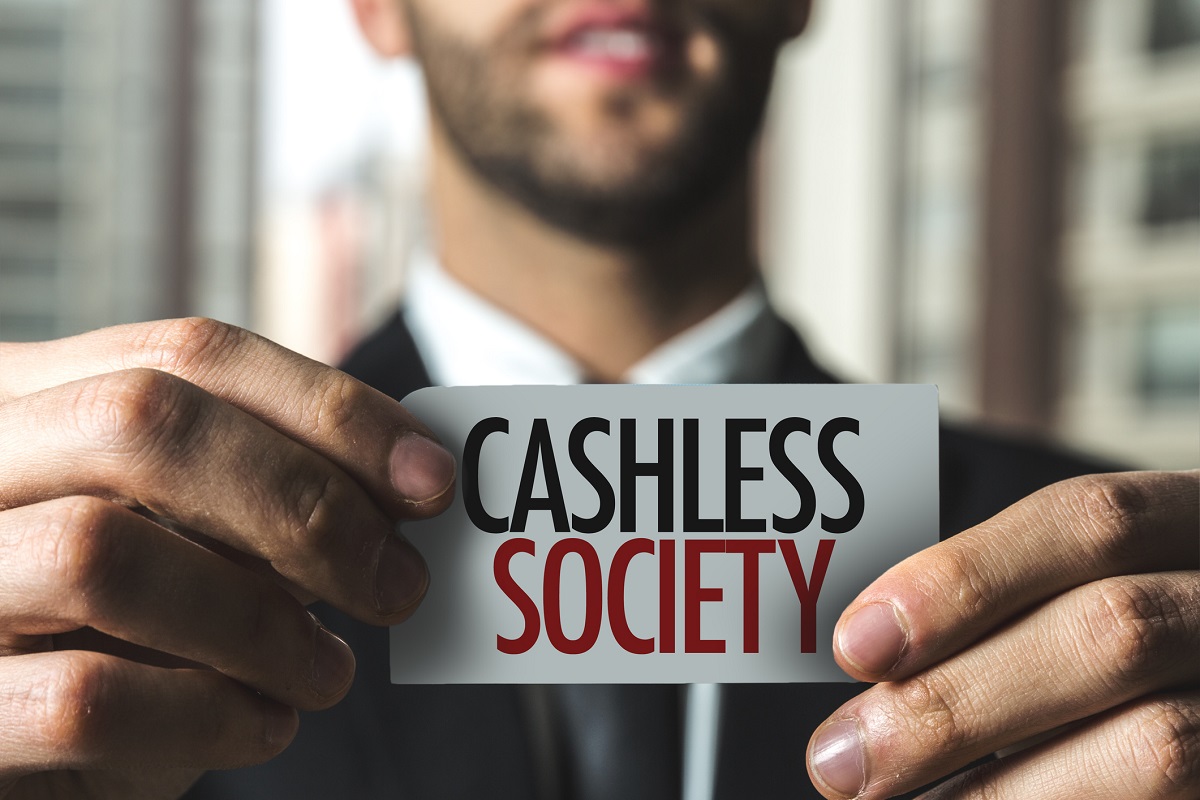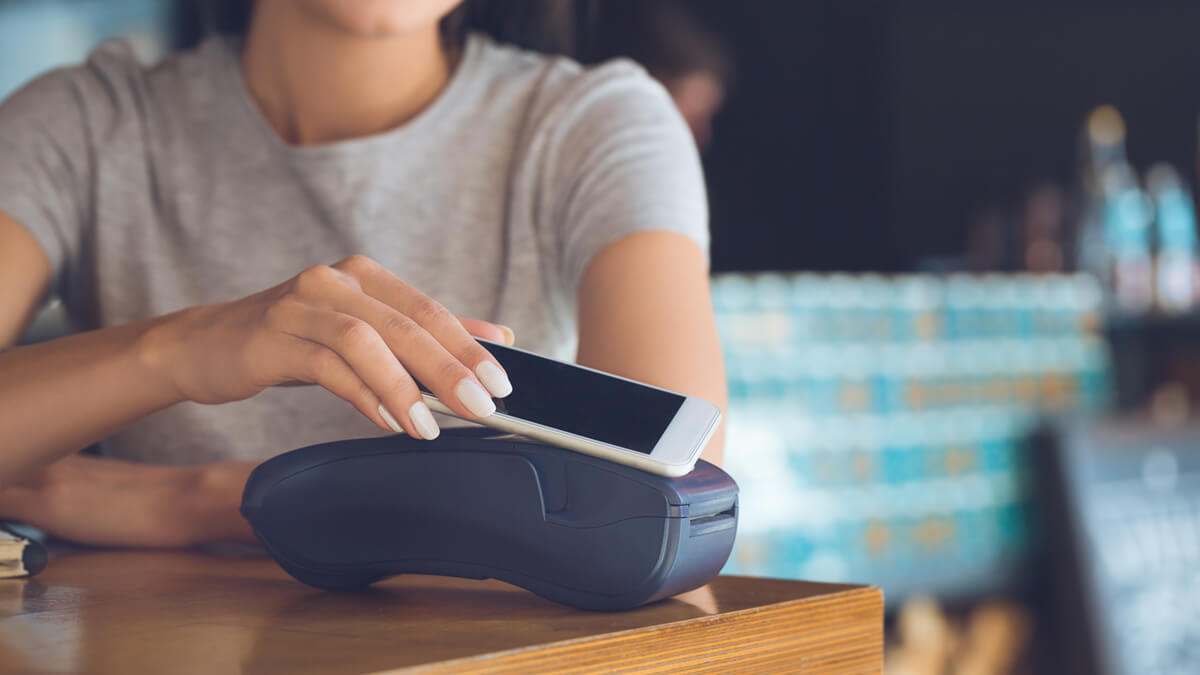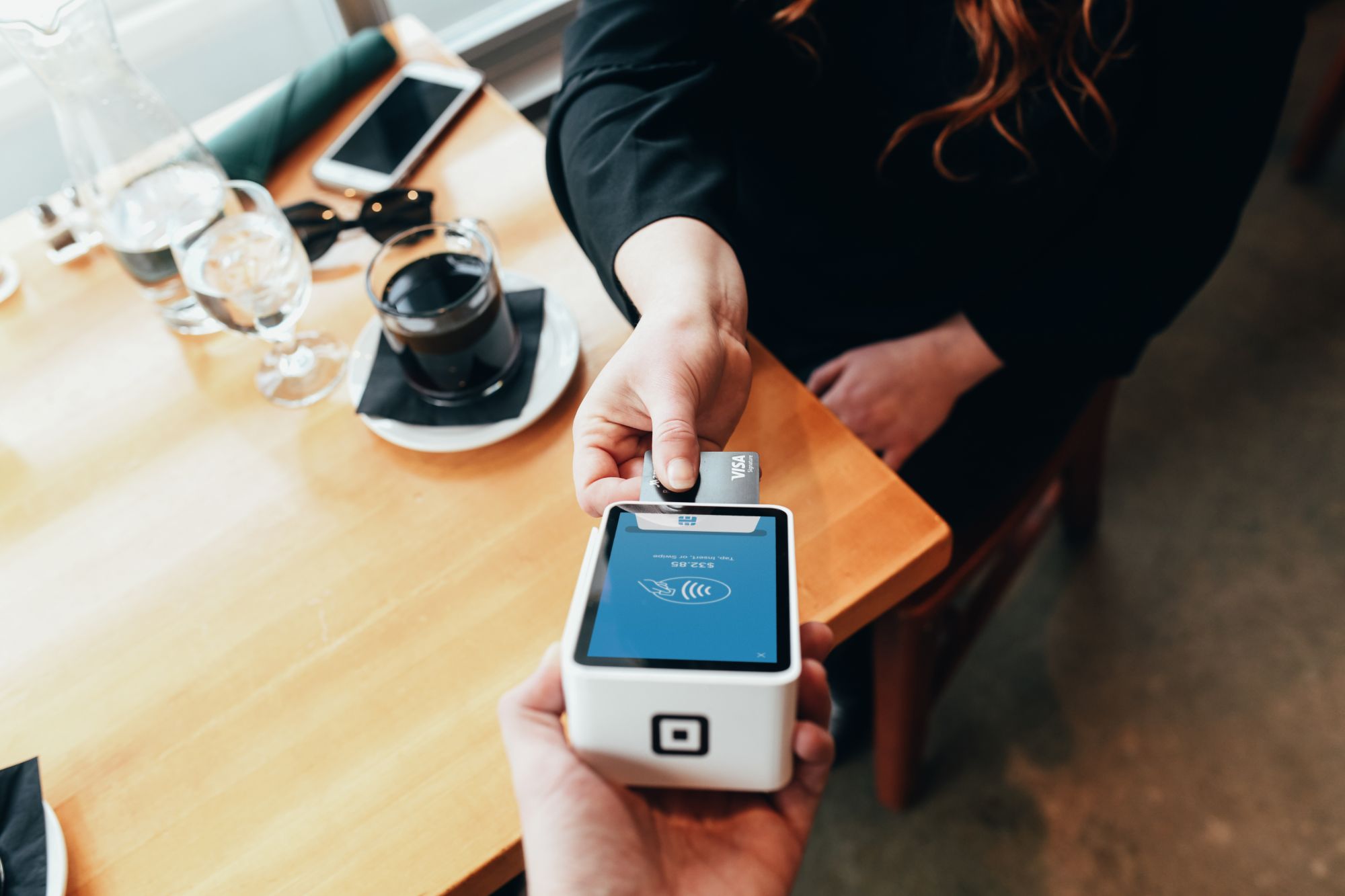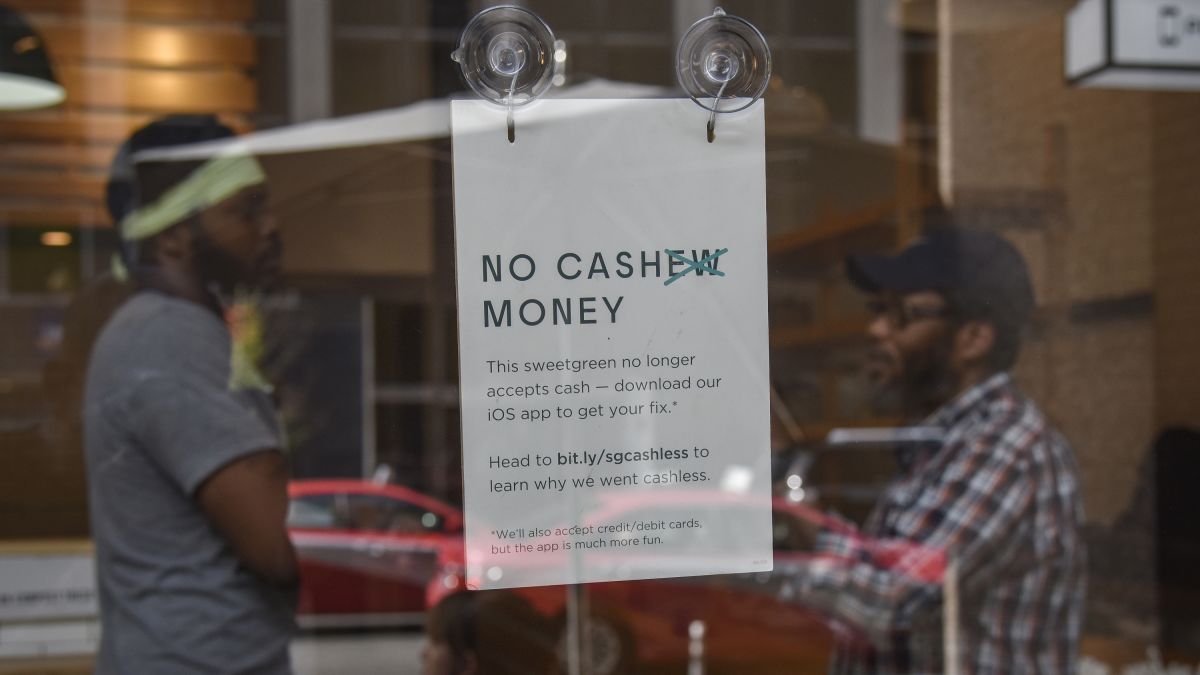Introduction
Welcome to the digital age, where cash is no longer king. With the rapid advancement of technology, we have witnessed a significant shift towards a cashless society. More and more people are relying on digital forms of payment, such as credit cards, mobile wallets, and online banking. While this transformation brings convenience and efficiency, it also raises concerns about the security and protection of our personal information.
In this article, we will explore the benefits and challenges of a cashless society, as well as the steps you can take to protect yourself in this new digital landscape. From safeguarding your personal information to securing your mobile payments, we will provide you with practical tips and strategies to navigate the cashless world securely.
As we embrace the digital revolution, it’s crucial to be aware of the risks that come with it. Cybercriminals are constantly lurking in the virtual shadows, seeking to exploit vulnerabilities and steal sensitive information. However, by implementing certain precautionary measures and adopting responsible online habits, you can minimize the likelihood of falling victim to fraudulent activities.
Are you ready to empower yourself with the knowledge and tools needed to safeguard your financial well-being? Let’s dive into the world of cashless transactions and discover how you can protect yourself in this ever-evolving digital landscape.
The Benefits and Challenges of a Cashless Society
The transition to a cashless society offers numerous advantages that have influenced its widespread adoption. Firstly, it brings unparalleled convenience to our daily lives. With digital payments, there’s no need to carry bulky wallets or worry about making exact change. A simple tap or swipe of a card or mobile device can effortlessly complete transactions.
Furthermore, a cashless society promotes financial transparency. Electronic transactions leave digital footprints, making it easier to track and manage expenses. This enhanced transparency helps individuals gain better control over their finances, identify spending patterns, and make informed financial decisions.
In addition to convenience and financial transparency, digital payments contribute to improved efficiency. Unlike cash transactions, which involve time-consuming manual counting and verification, electronic payments can be processed instantaneously, reducing waiting times and increasing overall efficiency for businesses and consumers alike.
However, along with these benefits, there are also challenges associated with a cashless society that need to be addressed. One of the primary concerns is the potential for increased vulnerability to cybercrime and identity theft. As we become more reliant on digital transactions, there is a greater risk of our personal and financial information falling into the wrong hands. It is essential to adopt security measures to protect ourselves from these threats.
Another challenge is the exclusion of individuals who do not have access to banking services or who are not familiar with the technology required for digital payments. While the majority of people have embraced cashless options, it’s important to find solutions that cater to the needs of those who are less technologically inclined or financially marginalized.
To overcome these challenges, it is crucial to strike a balance between the benefits of a cashless society and the necessary safeguards to protect individuals’ privacy and security. In the following sections, we will explore practical steps you can take to safeguard your personal information, secure your transactions, and protect yourself from fraud in the cashless world.
Understanding the Risks
As we navigate the realm of cashless transactions, it is essential to be aware of the risks involved. Understanding these risks empowers us to take proactive measures to protect our information and financial well-being.
One of the primary risks in a cashless society is the potential for data breaches and identity theft. Cybercriminals are continually evolving their techniques to exploit vulnerabilities in the digital landscape, aiming to gain unauthorized access to personal information. This information can then be used for fraudulent purposes, such as opening accounts in your name or making unauthorized purchases.
Phishing scams are another prevalent risk in the digital world. These scams involve deceptive emails, messages, or websites that appear to be from legitimate sources, tricking individuals into submitting sensitive information or downloading malware. Staying alert and being cautious of suspicious communications is crucial in protecting yourself from falling victim to these scams.
Another risk is the possibility of unauthorized transactions on your accounts. While digital payment methods offer convenience, they also require safeguards to prevent unauthorized access. This can include theft of your physical card, compromised passwords, or even remote attacks on your mobile devices.
Lastly, the lack of privacy in digital transactions poses a risk. With every transaction you make, data is being collected and shared, creating a profile of your spending habits and personal preferences. While this data can be used to enhance user experiences and provide personalized offers, it also raises concerns about the potential misuse or unauthorized access to this information.
Understanding these risks is the first step in protecting yourself in a cashless society. In the following sections, we will discuss practical measures you can implement to safeguard your personal information, secure your transactions, and mitigate the risks associated with a digital payment landscape.
Protecting Your Personal Information
In a cashless society, protecting your personal information is vital to safeguarding your financial well-being. Here are some essential steps you can take to keep your information secure:
1. Use Strong and Unique Passwords: Ensure that your accounts and devices are protected with strong, unique passwords. Avoid using easily guessable information and consider using a password manager to generate and store complex passwords securely.
2. Enable Two-Factor Authentication (2FA): Two-factor authentication adds an additional layer of security by requiring a second method of verification, such as a fingerprint or a unique code sent to your phone, to access your accounts.
3. Be Mindful of Sharing Personal Information: Limit the personal information you share online and only provide it to trusted and reputable organizations. Avoid sharing sensitive information over insecure networks or with unknown individuals.
4. Regularly Update and Secure Your Devices: Keep all your devices, including smartphones, tablets, and computers, updated with the latest security patches and antivirus software. This helps protect against malware, viruses, and other security vulnerabilities.
5. Review Privacy Settings: Regularly review the privacy settings on your devices and online accounts to ensure that you are only sharing necessary information and that your data is being handled appropriately.
6. Be Wary of Suspicious Emails and Messages: Beware of phishing attempts, where cybercriminals pose as legitimate organizations to trick you into revealing sensitive information. Be cautious of clicking on links or downloading attachments from unknown sources.
7. Use Secure Wi-Fi Networks: When accessing the internet, especially for financial transactions, ensure that you are using a secure Wi-Fi network. Avoid using public, unsecured networks where your data may be intercepted.
8. Regularly Monitor Your Accounts: Keep a close eye on your bank statements and credit card transactions. Report any suspicious activity or unauthorized charges immediately to your financial institution.
By following these measures, you can significantly reduce the risk of your personal information being compromised. In the next sections, we will delve into securing your mobile payments, choosing the right payment methods, and being cautious with online shopping.
Securing Your Mobile Payments
Mobile payments have become increasingly popular in the cashless society, offering convenience and flexibility. However, it’s crucial to ensure that your mobile payments are conducted securely. Here are some key steps to secure your mobile payment transactions:
1. Use Trusted and Secure Payment Apps: Stick to reputable payment apps offered by trusted providers. Verify the app’s security features and read reviews before downloading and using it.
2. Secure Your Mobile Device: Set a strong PIN or password to lock your device. Enable biometric authentication, such as fingerprint or facial recognition, for an extra layer of security.
3. Update Your Apps and Operating System: Keep your mobile payment apps and operating system up to date to ensure you have the latest security features and bug fixes.
4. Enable Notification Alerts: Turn on transaction alerts or notifications for your mobile payment apps. This way, you’ll be instantly notified of any suspicious or unauthorized transactions.
5. Avoid Rooting or Jailbreaking Your Device: Modifying your device’s operating system, such as rooting an Android device or jailbreaking an iPhone, weakens its security and makes it more susceptible to malware or unauthorized access.
6. Be Mindful of Public Wi-Fi: Avoid conducting mobile payment transactions while connected to public, unsecured Wi-Fi networks. Use a trusted virtual private network (VPN) when accessing sensitive information over public networks.
7. Regularly Monitor Your Mobile Payment Accounts: Keep a close eye on your mobile payment app transactions. Report any suspicious or unauthorized activities to the app provider immediately.
8. Securely Dispose of Old Devices: Before discarding or selling your old mobile devices, ensure that all personal and payment information is wiped clean. Use factory reset options or specialized software to remove all data thoroughly.
By implementing these security measures, you can significantly enhance the safety of your mobile payment transactions. In the next sections, we will discuss choosing the right payment methods, monitoring your accounts, and being cautious with online shopping.
Choosing the Right Payment Methods
When participating in a cashless society, it’s essential to choose the right payment methods to ensure both convenience and security. Here are some factors to consider when selecting your payment methods:
1. Credit Cards: Credit cards offer additional security features, such as fraud protection and dispute resolution, making them a popular choice for online and in-person transactions. Choose credit cards that offer robust security measures and regularly review your statements for any unauthorized charges.
2. Debit Cards: Debit cards are directly linked to your bank account. While they offer convenience, be cautious when using them, as potential fraudulent transactions can lead to direct access to your funds. Regularly monitor your account and report any suspicious activity promptly.
3. Mobile Wallets: Mobile wallets, such as Apple Pay, Google Pay, or Samsung Pay, provide a convenient way to make contactless payments using your smartphone. Ensure that your mobile wallet is secured with a strong password or PIN, and only add trusted payment cards to your wallet.
4. Online Payment Platforms: Online payment platforms like PayPal, Venmo, or Square offer a secure way to send and receive funds online. Choose platforms that use encryption and provide additional security features, like two-factor authentication.
5. Virtual Cards: Consider using virtual cards for online purchases. Virtual cards provide a unique card number for each transaction, reducing the risk of your actual card details being compromised.
6. Contactless Payments: Contactless payments, using technologies like Near Field Communication (NFC), are becoming increasingly popular. Check for the contactless payment symbol when making in-store purchases and regularly monitor your contactless transactions for any potential unauthorized charges.
7. Cash Alternatives: Some people may prefer using cash alternatives like prepaid cards or gift cards. Ensure that these cards come from reputable issuers to minimize the potential for fraud or unauthorized use.
Remember to review the terms and conditions, security features, and fraud protection policies associated with each payment method you choose. Regularly monitor your accounts and transactions to detect and report any suspicious activity promptly.
Next, we will explore monitoring your accounts, being cautious with online shopping, and protecting yourself from scams and fraud in a cashless society.
Monitoring Your Accounts
In a cashless society, it is crucial to proactively monitor your accounts to detect and prevent any potential unauthorized activity. Here are some important steps to effectively monitor your accounts:
1. Regularly Review Your Statements: Take the time to review your bank statements, credit card statements, and mobile payment app transactions regularly. Look for any unfamiliar or suspicious charges and report them to your financial institution immediately.
2. Set Up Account Alerts: Enable account alerts and notifications for your financial accounts. This way, you’ll receive real-time alerts for specified transactions, such as large purchases or withdrawals, providing an extra layer of security and enabling quick detection of any fraudulent activity.
3. Monitor your Credit Reports: Regularly check your credit reports from major credit bureaus. This allows you to review your credit history, identify any unfamiliar accounts or inquiries, and detect potential signs of identity theft. You are entitled to one free credit report from each bureau per year.
4. Utilize Account Monitoring Services: Consider using account monitoring services or identity theft protection services offered by financial institutions, credit card companies, or reputable third-party providers. These services provide additional layers of security by scanning for potential signs of fraud or unauthorized access.
5. Stay Alert for Data Breaches: Keep yourself informed about data breaches that may affect your financial accounts. Monitor news and updates from reputable sources and promptly take necessary actions if your accounts are compromised.
6. Check Transaction History in Your Mobile Payment Apps: Regularly review the transaction history in your mobile payment apps to ensure all transactions were authorized. Contact the app provider immediately if you notice any suspicious activity.
By actively monitoring your accounts and staying vigilant, you can detect potential fraudulent activities early on and take immediate action to mitigate any potential damage. In the next sections, we will discuss being cautious with online shopping, protecting yourself from scams and fraud, and creating strong passwords.
Being Cautious with Online Shopping
Online shopping has become increasingly popular in our cashless society, offering convenience and a wide range of products. However, it’s essential to exercise caution when engaging in online shopping to protect yourself from potential scams and fraud. Here are some tips to help you stay safe:
1. Shop from Trusted Websites: Stick to reputable and well-known online retailers when making purchases. Look for secure website indicators, such as a padlock icon in the URL bar, to ensure that your payment information is encrypted and protected.
2. Be Skeptical of Deals that Seem Too Good to Be True: Be cautious of incredibly low prices or deals that seem too good to be true, as they may be signs of scam websites or counterfeit products.
3. Read Reviews and Check Seller Ratings: Before making a purchase, read customer reviews and check the seller’s ratings or feedback. This will provide insights into the credibility of the seller and the quality of the product or service.
4. Use Secure Payment Methods: Opt for secure payment methods such as credit cards or trusted online payment platforms. Avoid using direct bank transfers or wiring money to unknown individuals or websites.
5. Keep Personal Information Secure: Be cautious when providing personal information during the online shopping process. Only provide necessary details and avoid sharing sensitive information over unsecured websites or with unknown sellers.
6. Beware of Phishing Scams: Be cautious of emails, messages, or pop-up windows asking for your personal or financial information. Legitimate companies will not request confidential information through these channels. When in doubt, visit the retailer’s website directly rather than clicking on suspicious links.
7. Keep Records and Save Confirmations: Save copies of your order confirmations, receipts, and any communication with the seller. This documentation will be helpful in case of disputes or issues with your purchases.
8. Check Return Policies: Review the return policies of online retailers before making a purchase. Ensure that they offer a hassle-free return process in case you need to return or exchange an item.
By following these precautions, you can significantly reduce the risks associated with online shopping and ensure a safe and secure shopping experience. Next, we will explore protecting yourself from scams and fraud as well as creating strong passwords to enhance your online security.
Protecting Yourself from Scams and Fraud
In a cashless society, it’s crucial to be vigilant and protect yourself from scams and fraudulent activities. Here are some essential tips to help you stay safe:
1. Be Aware of Common Scams: Educate yourself about common scams, such as phishing emails, fake websites, or charity scams. Stay informed about the latest scam tactics to recognize and avoid them.
2. Verify the Legitimacy of Communications: Be cautious of unsolicited emails, phone calls, or messages asking for personal or financial information. Verify the identity and legitimacy of the sender before providing any sensitive information.
3. Be Skeptical of Unexpected Prize or Lottery Winnings: Be wary of messages informing you of unexpected prize winnings or lottery winnings you never entered. Genuine lotteries and sweepstakes do not require upfront payment or personal information to collect your winnings.
4. Keep Personal Information Private: Avoid sharing personal or financial information to unknown individuals or through insecure channels. Legitimate organizations will never ask for your sensitive information through unsolicited communication.
5. Double-Check Website URLs: When visiting websites, carefully review the URL to ensure it is spelled correctly and matches the official website of the organization. Scammers often create websites with similar URLs to deceive unsuspecting users.
6. Secure Your Internet Connection: Use a secure and encrypted internet connection, especially when accessing sensitive information or making online payments. Avoid using public Wi-Fi networks for such activities.
7. Trust Your Instincts: If something feels suspicious or too good to be true, trust your instincts and refrain from proceeding further. Taking a cautious approach can help protect you from falling victim to scams.
8. Report Suspected Scams: If you encounter a scam or believe you have been targeted, report it to the relevant authorities, such as your local law enforcement, the Federal Trade Commission (FTC), or your country’s consumer protection agency.
Remember that staying informed, using common sense, and maintaining a healthy skepticism are your best defenses against scams and fraud. In the next section, we will discuss creating strong passwords to secure your accounts.
Creating Strong Passwords
Creating strong passwords is vital for protecting your online accounts from unauthorized access. Here are some tips to help you create strong and secure passwords:
1. Length and Complexity: Use passwords that are at least 12 characters long, combining uppercase and lowercase letters, numbers, and special characters. Avoid using easily guessable passwords, such as your name, birthdate, or commonly used terms.
2. Unique Passwords for Each Account: Avoid using the same password across multiple accounts. If one account is compromised, having unique passwords ensures that other accounts are not vulnerable.
3. Randomize your Passwords: Instead of using common words or phrases, consider using a combination of random words, unrelated to your personal information. This makes it more challenging for hackers to guess your password.
4. Avoid Personal Information: Do not use personal information, such as your name, nickname, or birthdate, as part of your password. This information can be easily obtained or guessed by attackers.
5. Consider Using Passphrases: Instead of a single word password, create a passphrase consisting of multiple words. This increases the complexity and makes it easier to remember.
6. Regularly Change Your Passwords: Regularly update your passwords, ideally every three to six months. This reduces the risk of your passwords being compromised and provides an extra layer of security.
7. Use Password Managers: Consider using password manager applications that securely store and generate complex passwords for you. This allows you to have unique and strong passwords for each account without the need to remember them all.
8. Enable Two-Factor Authentication (2FA): Enable two-factor authentication whenever possible. This adds an extra layer of security by requiring a second form of verification, such as a fingerprint or a temporary code sent to your mobile device, in addition to your password.
By following these practices, you can significantly enhance the security of your online accounts and protect yourself from unauthorized access. In the next sections, we will discuss keeping your devices secure and using encryption and VPNs to further enhance your online security.
Keeping Your Devices Secure
In a cashless society, keeping your devices secure is crucial to protect your personal information and ensure a safe digital experience. Here are some essential tips to help you keep your devices secure:
1. Set Strong Passwords or PINs: Use strong and unique passwords or PINs to lock your devices. Avoid using easily guessable combinations like “1234” or “password.”
2. Enable Biometric Authentication: Utilize biometric authentication features such as fingerprint or facial recognition to add an extra layer of security to your devices.
3. Keep Your Operating System Up to Date: Regularly update your device’s operating system, as these updates often include important security patches and bug fixes.
4. Install Antivirus and Security Software: Use reputable antivirus and security software to protect your devices from malware, viruses, and other online threats. Keep the software up to date for the best protection.
5. Be Cautious of App Downloads: Only download apps from trusted sources, such as official app stores. Be wary of apps from unknown developers, as they may contain malware or compromise your device’s security.
6. Be Mindful of Public Wi-Fi: When using public Wi-Fi networks, limit your access to sensitive information and avoid conducting financial transactions unless you are connected to a secure network or using a trusted virtual private network (VPN).
7. Securely Back Up Your Data: Regularly back up your data to an external source, such as a cloud storage service or an external hard drive. This ensures that your important information is protected in case of device loss, theft, or damage.
8. Disable Automatic Connections: Disable automatic connection to unknown or untrusted Wi-Fi networks, Bluetooth devices, or NFC (Near Field Communication) to prevent unwanted access to your device.
By implementing these security measures, you can help safeguard your devices and protect your personal information in a cashless society. In the next section, we will discuss using encryption and virtual private networks (VPNs) to enhance your online security further.
Using Encryption and VPNs
In a cashless society, using encryption and virtual private networks (VPNs) can add an extra layer of security to your online activities, protecting your data and ensuring your privacy. Here’s how you can leverage encryption and VPNs:
1. Encryption: Encryption is a method of encoding data to prevent unauthorized access. Ensure that your devices and applications use strong encryption protocols, such as SSL/TLS, for secure communication with websites and online services.
2. Secure Websites (HTTPS): When visiting websites, look for the “https://” prefix in the URL instead of “http://”. The “s” indicates that the website uses SSL/TLS encryption to safeguard your data during transmission.
3. Use Encryption Tools and Apps: Consider using encryption tools and apps to protect sensitive files and messages on your devices. These tools encode your data, making it unreadable to unauthorized individuals.
4. Virtual Private Networks (VPNs): VPNs create an encrypted network connection between your device and the internet, protecting your online activities from prying eyes. Use VPNs, especially when connected to public Wi-Fi networks, to secure your data and maintain your privacy.
5. Select Trusted VPN Providers: Use reputable VPN providers that prioritize privacy and have a proven track record of security. Research and read reviews to choose a provider that offers strong encryption, a strict no-logs policy, and reliable service.
6. Enable VPN on Mobile Devices: Install VPN apps on your mobile devices and enable them whenever you connect to untrusted Wi-Fi networks or want to ensure a secure connection for online activities.
7. Benefits of VPN for Online Banking: When performing online banking transactions, using a VPN can add an additional layer of security by encrypting your connection and masking your IP address.
8. Understand VPN Limitations: While VPNs provide enhanced security and privacy, they are not a guarantee against all online threats. Ensure that you continue to follow best practices, such as keeping your devices and applications up to date.
By utilizing encryption methods and VPNs, you can significantly enhance your online security and protect your sensitive information from unauthorized access. In the final section, we will discuss the importance of staying informed about data breaches and how to protect your identity effectively.
Staying Informed about Data Breaches
In a cashless society, it’s crucial to stay informed about data breaches to protect your personal information from falling into the wrong hands. Here are some important steps to help you stay informed:
1. Follow Reliable News Sources: Stay updated on the latest news regarding data breaches from trusted sources, such as reputable technology websites, cybersecurity blogs, or established news outlets. This will help you stay aware of potential threats and adopt necessary precautions.
2. Monitor Breach Notification Services: Sign up for breach notification services offered by reputable organizations or cybersecurity companies. These services alert you if your personal information has been compromised in a data breach.
3. Check with Service Providers: Regularly check with your financial institutions, email providers, social media platforms, and other online service providers to see if they have experienced any data breaches. They will often inform users if their accounts have been compromised.
4. Use Identity Theft Monitoring Services: Consider using identity theft monitoring services provided by reputable companies. These services monitor your personal information, such as your Social Security number, credit cards, and email addresses, and alert you of any suspicious activities.
5. Review Privacy Settings: Regularly review and adjust the privacy settings on your online accounts and devices. Opt for stronger privacy settings to limit the amount of personal information shared and reduce your exposure to potential breaches.
6. Update Passwords after Breaches: If a data breach occurs, update your passwords for the affected accounts immediately. Choose strong and unique passwords to protect your accounts from further unauthorized access.
7. Educate Yourself about Data Breach Types: Understand the different types of data breaches, such as phishing attacks, malware infiltration, or third-party breaches. This knowledge can help you recognize potential risks and take appropriate preventive measures.
8. Be Wary of Phishing Attempts: Data breaches can lead to an increase in phishing attempts. Be cautious of emails, messages, or calls asking for personal or financial information, especially if they claim to be related to a recent data breach. Verify the authenticity of the communication before providing any sensitive information.
By staying informed about data breaches and taking proactive measures to protect your personal information, you can minimize the potential impact of such incidents. In the final section, we will discuss protecting your identity and the importance of monitoring your credit score.
Protecting Your Identity
In a cashless society, protecting your identity is crucial to safeguard your financial well-being. Here are some important steps to help you protect your identity:
1. Be Mindful of Personal Information Sharing: Limit the amount of personal information you share online and offline. Be cautious about providing your Social Security number, birthdate, or other sensitive information unless it is necessary.
2. Secure Your Mail and Documents: Protect your physical mail and documents containing personal information by using secure mailboxes and shredding any documents that are no longer needed.
3. Use Strong and Unique Passwords: Use strong and unique passwords for all your online accounts and devices. Avoid using easily guessable passwords and consider using a password manager to help you generate and store complex passwords securely.
4. Secure Your Social Media Accounts: Adjust the privacy settings on your social media accounts to limit the amount of personal information visible to others. Be cautious about accepting friend requests or connections from unknown individuals.
5. Freeze Your Credit: Consider freezing your credit with the major credit bureaus. This adds an extra layer of protection, as it prevents new credit accounts from being opened in your name without your authorization.
6. Monitor Your Credit Score: Regularly monitor your credit score and review your credit reports for any suspicious activity. Look for unauthorized accounts, inquiries, or changes in your credit history that could indicate identity theft.
7. Avoid Phishing Attempts: Be wary of emails, messages, or phone calls asking for personal or financial information. Legitimate organizations will not request sensitive information through these channels. Verify the authenticity of the communication before providing any confidential information.
8. Be Cautious with Public Wi-Fi: When connected to public Wi-Fi networks, avoid accessing or transmitting sensitive information. Use a trusted virtual private network (VPN) to encrypt your connection and enhance your online security.
By implementing these identity protection measures, you can significantly reduce the risk of identity theft and ensure the security of your personal information. Regular monitoring and being vigilant against potential threats are crucial for maintaining a secure identity in a cashless society.
Monitoring Your Credit Score
In a cashless society, monitoring your credit score is an essential part of maintaining your financial health and protecting yourself from identity theft. Here’s why and how you should monitor your credit score:
1. Understand the Importance of Your Credit Score: Your credit score is a numerical representation of your creditworthiness. Lenders, landlords, and other entities use it to assess your financial reliability when you apply for loans, credit cards, or even rental agreements.
2. Regularly Check Your Credit Reports: Obtain your credit reports from major credit bureaus periodically and review them for inaccuracies or discrepancies. Look for any unfamiliar accounts, incorrect personal information, or unauthorized inquiries, as these could be indicators of fraud or identity theft.
3. Monitor Your Credit Score Changes: Keep an eye on your credit score and track any changes over time. Sudden drops in your credit score without apparent reason might indicate potential issues that need attention.
4. Sign Up for Credit Monitoring Services: Consider enrolling in credit monitoring services offered by reputable companies. These services provide regular updates about changes to your credit reports, including new accounts, late payments, or inquiries, allowing you to detect and address any suspicious activities promptly.
5. Set Up Credit Alerts: Take advantage of credit alerts offered by credit bureaus or credit monitoring services. These alerts notify you of significant changes to your credit reports or suspicious activities associated with your identity.
6. Report Errors or Suspicious Activities: If you spot any errors or suspicious activities on your credit reports, immediately report them to the respective credit bureau and the relevant creditors. Prompt action can help rectify inaccuracies and prevent further damage to your creditworthiness.
7. Protect Your Personal Information: Safeguarding your personal information is vital to maintaining a healthy credit profile. Be cautious when sharing sensitive information online and offline, and promptly report any incidents of identity theft or fraud.
8. Stay Educated on Credit-related Topics: Educate yourself about credit-related topics, such as credit utilization, payment history, and factors that affect your credit score. This knowledge can help you make informed financial decisions and proactively improve your creditworthiness.
By monitoring your credit score, staying informed about changes and potential threats to your credit profile, and taking prompt action when necessary, you can effectively protect yourself in a cashless society. In the final section, we will summarize the key points discussed in this article.
Being Prepared for Emergencies
In a cashless society, it’s important to be prepared for unexpected emergencies that may impact your financial well-being. Here are some essential steps to help you be prepared:
1. Maintain an Emergency Fund: Set aside funds in an emergency savings account to cover unexpected expenses, such as medical bills, car repairs, or job loss. Aim to save three to six months’ worth of living expenses.
2. Have Backup Payment Methods: While cashless transactions are prevalent, it’s still crucial to have backup payment methods. Keep a small amount of cash on hand and have a debit card or credit card accessible in case of emergencies where digital payments may not be an option.
3. Review Insurance Coverage: Regularly review and update your insurance coverage, including health insurance, auto insurance, and home insurance. Ensure that your coverage is adequate to protect you and your assets in the event of an emergency.
4. Create a List of Emergency Contacts: Compile a list of important emergency contacts, including family members, close friends, medical professionals, and financial institutions. Keep this list readily accessible in case of emergencies.
5. Document Important Information: Make digital copies of important documents, such as identification cards, passports, insurance policies, and financial statements. Store them securely on encrypted devices or in cloud storage to ensure easy access during emergencies.
6. Establish a Communication Plan: In the event of a natural disaster or emergency, establish a communication plan with your family members or loved ones. Ensure that everyone knows how to reach each other and where to meet, if necessary.
7. Stay Informed about Emergency Preparedness: Stay updated on emergency preparedness information provided by local authorities or emergency management agencies. Understand evacuation routes, emergency shelters, and other crucial information specific to your area.
8. Regularly Revisit and Update Your Emergency Plan: Review and update your emergency plan periodically to account for any changes in personal circumstances, contact information, or emergency procedures.
By being prepared for emergencies, you can alleviate some of the stress and financial strain that can arise during unexpected situations. Stay proactive, keep your emergency fund well-funded, and ensure that you have the necessary backup plans in place. With careful planning and preparation, you can navigate emergencies with greater ease in a cashless society.
Conclusion
As we embrace the era of digital transactions and navigate the complexities of a cashless society, it’s crucial to prioritize security, protect our personal information, and be prepared for unexpected emergencies. While the benefits of convenience and efficiency are undeniable, the risks of cybercrime and identity theft require us to be proactive in safeguarding our financial well-being.
Throughout this article, we have explored various strategies for protecting ourselves in a cashless society. From understanding the risks and staying informed about data breaches to securing our personal information, choosing the right payment methods, and monitoring our accounts, each step contributes to our overall security. We have also discussed the importance of being cautious with online shopping, protecting ourselves from scams and fraud, creating strong passwords, keeping our devices secure with encryption and VPNs, and monitoring our credit score.
Furthermore, we emphasized the significance of being prepared for emergencies by maintaining an emergency fund, having backup payment methods, and having a robust plan in place. By following these guidelines, we can navigate the digital landscape confidently and protect our financial well-being.
In a cashless society, vigilance is key. Stay informed of the evolving threats, educate yourself about best practices, and regularly review and update your security measures. By taking these steps, we can enjoy the convenience and benefits of a cashless society while minimizing the risks.
Remember, protecting your personal information and financial security is an ongoing process. Stay informed, be proactive, and adapt as technology and security measures continue to evolve. By doing so, you can confidently navigate the cashless world and ensure a safe and secure digital experience.







